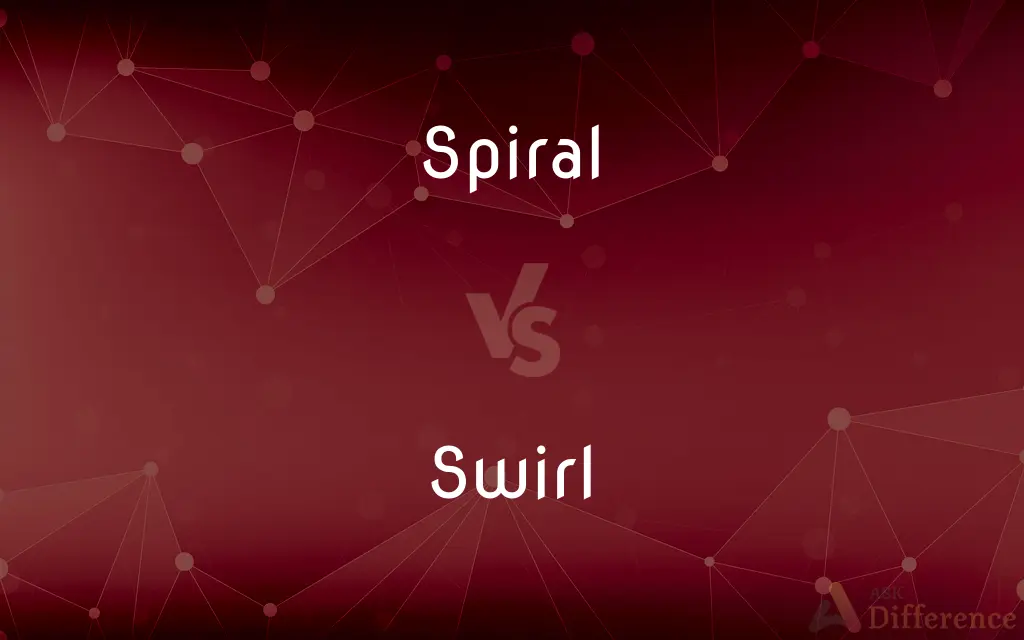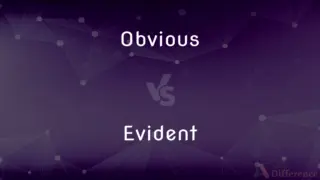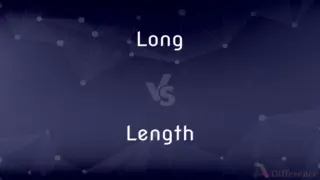Spiral vs. Swirl — What's the Difference?
By Maham Liaqat & Fiza Rafique — Updated on April 23, 2024
A spiral is a curve that winds around a fixed center point at a continuously increasing or decreasing distance, while a swirl is a pattern of circular or twisting movements without a fixed center point.

Difference Between Spiral and Swirl
Table of Contents
ADVERTISEMENT
Key Differences
Spirals and swirls are both patterns that involve curves and circular motions, but they differ in their structure and the way they are formed. A spiral is geometrically defined, with its curve winding around a central point in a plane that either moves away from or towards that point. On the other hand, a swirl lacks the geometric precision of a spiral. It refers to a pattern of circular or semi-circular movements where the path curves around itself or intertwines with other similar paths, but without a consistent change in distance from a central point.
In nature, spirals appear in many forms, such as the shells of snails and certain galaxies, which follow precise mathematical rules. In contrast, swirls are observed in the way cream blends into coffee or in the patterns of certain flowers where the design is more organic and less predictable. In art and design, spirals may be used to convey a sense of expansion or contraction with a focus on symmetry and proportion, while swirls might be used to suggest movement, fluidity, or a more naturalistic approach to pattern-making.
The distinction also extends to their symbolic meanings. Spirals can represent growth, evolution, or the passage of time, given their orderly progression and mathematical basis. Swirls, with their more free-form and dynamic appearance, often symbolize change, flexibility, or the merging of different elements and ideas.
While both spirals and swirls involve circular motion, spirals are characterized by their geometric precision and fixed center point, reflecting a systematic pattern of movement. In contrast, swirls are defined by their more fluid and variable form, often lacking a clear center or systematic pattern, embodying a sense of freedom and spontaneity.
Comparison Chart
Definition
A curve winding around a fixed center point, with a continuous change in distance.
A pattern of circular or twisting movements, often without a fixed center point.
ADVERTISEMENT
Structure
Geometrically defined, systematic.
More fluid and variable, lacking geometric precision.
Examples
Snail shells, galaxies, Fibonacci spiral.
Mixing cream in coffee, smoke patterns, decorative designs.
Symbolism
Growth, evolution, passage of time.
Change, flexibility, merging of elements.
Contexts
Nature, architecture, mathematics.
Art, fluid dynamics, informal design.
Compare with Definitions
Spiral
Symbolizes continuity and progression.
Ancient symbols often use spirals to represent life cycles.
Swirl
A fluid, twisting pattern without a central focus.
The artist added blue swirls to the painting to evoke the sea.
Spiral
A geometric curve that moves around a central point.
The nautilus shell exhibits a perfect natural spiral.
Swirl
Represents movement or spontaneity.
The swirls in the coffee formed as milk was poured into it.
Spiral
Characterized by uniformity and precision.
The staircase in the old lighthouse forms a tight spiral upwards.
Swirl
Seen in more organic or informal contexts.
The swirl patterns on the cake were created with a free-hand technique.
Spiral
Represents systematic growth or expansion.
The spiral pattern of the galaxy illustrates cosmic structure.
Swirl
Lacks the geometric precision of spirals.
The child drew swirls on the ground with chalk, each overlapping the last.
Spiral
Found in mathematical and natural contexts.
Fibonacci's sequence is visualized through spirals in nature.
Swirl
Symbolizes change or blending of elements.
Swirls in the water where the river meets the sea indicate mixing currents.
Spiral
In mathematics, a spiral is a curve which emanates from a point, moving farther away as it revolves around the point.
Swirl
To move with a twisting or whirling motion; eddy.
Spiral
A curve on a plane that winds around a fixed center point at a continuously increasing or decreasing distance from the point.
Swirl
To be dizzy or disoriented.
Spiral
A three-dimensional curve that turns around an axis at a constant or continuously varying distance while moving parallel to the axis; a helix.
Swirl
To be arranged in a spiral, whorl, or twist.
Spiral
Something having the form of such a curve
A spiral of black smoke.
Swirl
To cause to move with a twisting or whirling motion
Swirled the drink with her straw.
Spiral
(Printing) A spiral binding.
Swirl
To form into or arrange in a spiral, whorl, or twist.
Spiral
The course or flight path of an object rotating on its longitudinal axis.
Swirl
A whirling or eddying motion or mass
A swirl of white water.
Spiral
A continuously accelerating increase or decrease
The wage-price spiral.
Swirl
Something, such as a curl of hair, that coils, twists, or whirls.
Spiral
Of or resembling a spiral.
Swirl
Whirling confusion or disorder
"high-pressure farce built around the swirl of mistaken identities" (Jay Carr).
Spiral
Circling around a center at a continuously increasing or decreasing distance.
Swirl
(ambitransitive) To twist or whirl, as an eddy.
I swirled my brush around in the paint.
Spiral
Coiling around an axis in a constantly changing series of planes; helical.
Swirl
To be arranged in a twist, spiral or whorl.
Spiral
(Printing) Relating to or having a spiral binding
A spiral notebook.
Swirl
(figuratively) To circulate.
Spiral
To take a spiral form or course.
Swirl
To mingle interracially.
Spiral
To rise or fall with steady acceleration.
Swirl
A whirling eddy.
Spiral
To cause to take a spiral form or course.
Swirl
A twist or coil of something.
Spiral
(geometry) A curve that is the locus of a point that rotates about a fixed point while continuously increasing its distance from that point. Category:en:Curves
Swirl
(fishing) The upward rushing of a fish through the water to take the bait.
Spiral
(informal) A helix.
Swirl
To whirl, or cause to whirl, as in an eddy.
Spiral
A self-sustaining process with a lot of momentum involved, so it is difficult to accelerate or stop it at once.
Swirl
A whirling motion; an eddy, as of water; a whirl.
Spiral
(rail) A section of track that forms a circle and crosses over itself, used for gaining height in mountainous territory.
Swirl
The shape of something rotating rapidly
Spiral
Helical, like a spiral.
Swirl
Turn in a twisting or spinning motion;
The leaves swirled in the autumn wind
Spiral
(intransitive) To move along the path of a spiral or helix.
Swirl
Flow in a circular current, of liquids
Spiral
(transitive) To cause something to spiral.
Spiral
To increase continually.
Spiral
Winding or circling round a center or pole and gradually receding from it; as, the spiral curve of a watch spring.
Spiral
Winding round a cylinder or imaginary axis, and at the same time rising or advancing forward; winding like the thread of a screw; helical.
Spiral
Of or pertaining to a spiral; like a spiral.
Spiral
A plane curve, not reëntrant, described by a point, called the generatrix, moving along a straight line according to a mathematical law, while the line is revolving about a fixed point called the pole. Cf. Helix.
Spiral
Anything which has a spiral form, as a spiral shell.
Spiral
A plane curve traced by a point circling about the center but at ever-greater distances from it
Spiral
A curve that lies on the surface of a cylinder or cone and cuts the element at a constant angle
Spiral
Ornament consisting of a curve on a plane that winds around a center with an increasing distance from the center
Spiral
A structure consisting of something wound in a continuous series of loops;
A coil of rope
Spiral
Flying downward in a helical path with a large radius
Spiral
To wind or move in a spiral course;
The muscles and nerves of his fine drawn body were coiling for action
Black smoke coiling up into the sky
The young people gyrated on the dance floor
Spiral
Form a spiral;
The path spirals up the mountain
Spiral
Move in a spiral or zigzag course
Spiral
In the shape of a coil
Common Curiosities
Can swirls have a center point?
While swirls can revolve around a point, they do not maintain a constant change in distance from it, making their center less defined than in spirals.
How are spirals used in design?
Spirals can be used to create a sense of movement, progression, or focus, often leveraging their symmetry and mathematical beauty.
Are all spirals the same?
No, spirals can vary in terms of tightness, direction (clockwise or counterclockwise), and whether they expand outward or inward.
Why do swirls appear when mixing liquids?
Swirls form in liquids due to the fluid dynamics involved when different viscosities and speeds of movement interact, creating twisting patterns.
Where are spirals found in nature?
Spirals are observed in the structure of galaxies, plant growth patterns, and the shells of certain animals, among other phenomena.
Is a vortex considered a spiral or a swirl?
A vortex, characterized by its spinning motion and tendency to pull objects towards its center, shares qualities with both but is often more closely associated with swirls due to its fluid dynamics.
Can spirals and swirls coexist in the same design?
Yes, combining spirals and swirls can add complexity and depth to a design, utilizing both their geometric precision and fluid spontaneity.
What does a swirl symbolize?
Swirls can symbolize flexibility, change, or the dynamic merging of ideas and elements, reflecting their more organic and fluid nature.
Can a swirl become a spiral?
Not in a strict sense; while they both involve circular motion, a swirl lacks the systematic change in distance from a central point that defines a spiral.
How do spirals and swirls affect the viewer's perception?
Spirals can draw the viewer's eye inward or outward, suggesting depth and movement, while swirls can create a sense of dynamism and fluidity.
Share Your Discovery

Previous Comparison
Obvious vs. Evident
Next Comparison
Long vs. LengthAuthor Spotlight
Written by
Maham LiaqatCo-written by
Fiza RafiqueFiza Rafique is a skilled content writer at AskDifference.com, where she meticulously refines and enhances written pieces. Drawing from her vast editorial expertise, Fiza ensures clarity, accuracy, and precision in every article. Passionate about language, she continually seeks to elevate the quality of content for readers worldwide.














































